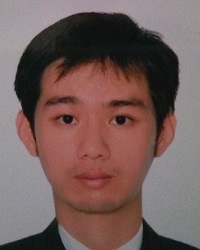
Keywords:
ZnO, MOCVD, piezoelectricity, nanostructure, polarity
cliquer pour voir la liste des membres du jury/clic here for the jury members
Abstract
Zinc Oxide (ZnO) is a very interesting sustainable material for piezoelectric applications as a biocompatible semiconductor composed of abundant elements. However, the piezoelectric efficiency of ZnO strongly depends on its morphological, structural and electrical properties. Interestingly, the growth conditions used during the pulsed-liquid injection metal−organic chemical vapor deposition (PLI-MOCVD) process can largely tune the morphological, structural, electrical and piezoelectric properties of ZnO deposits, but their correlations have not been explored so far. The objective of this thesis is to understand and control the key factors driving the ZnO formation by PLI-MOCVD and enhancing its piezoelectric performance. The growth temperature, reactant flow rates, and the nature of the substrate during the PLI-MOCVD process are optimized to study their effects on the growth of ZnO thin films and nanowires as well as on their properties.
By increasing the growth temperature from 400 to 750°C while fixing all other growth parameters, the morphology of ZnO deposited on Si substrates is changed from thin films to nanowires. This morphology transition is accompanied with the improvement of the c-axis orientation, piezoelectric coefficient and Zn-polar uniformity. The post-annealing at high temperature under O2 atmosphere performed on ZnO thin films also leads to higher c-axis orientation, piezoelectric coefficient and Zn-polar uniformity. The flow rate variation at 500 °C results in the formation of thin films with different morphologies and polarity distribution. On these thin films, the difference in properties and piezoelectric efficiency between Zn- and O-polarity domains are revealed. In contrast, the flow rate variation at 700 °C results in the formation of nanowires with different lengths and diameters. All nanowires exhibit the Zn-polarity. The correlation of the piezoelectric efficiency and the nanowire geometry is also presented. In addition, the integration of the AZO layer as a bottom transparent electrode leads to further increasing the piezoelectric efficiency of ZnO nanowires while opening some perspectives towards the fabrication of visible blind piezoelectric devices containing only sustainable materials. These results eventually demonstrate the great flexibility of the PLI-MOCVD system to grow ZnO with different morphologies and properties for piezoelectric devices.
Membres du jury/ Jury members :
|
Dr. |
Vincent SALLET |
CNRS, GEMAC, Université Paris Saclay, Versailles (France) |
Rapporteur |
|
Dr. |
Jesus ZUNIGA-PEREZ |
CNRS, CRHEA, Université Côte d'Azur, Valbonne (France) |
Rapporteur |
|
Dr. |
Noelle GOGNEAU |
CNRS, C2N, Université Paris Saclay, Palaiseau (France) |
Examiner |
|
Prof. |
Daniel ALQUIER |
CNRS, GREMAN, Université de Tours, Tours (France) |
Examiner |
|
Prof. |
Ahmad BSIESY |
CIME Nanotech, Université Grenoble Alpes, Grenoble (France) |
Examiner |
|
Dr. |
Gustavo ARDILA RODRIGUEZ |
CNRS, IMEP-LAHC, Université Grenoble Alpes, Grenoble (France) |
Thesis Director |
|
Dr. |
Vincent CONSONNI |
CNRS, LMGP, Université Grenoble Alpes, Grenoble (France) |
Thesis Co-director |
|
Dr. |
Bassem SALEM |
CNRS, CEA/ LETI, LTM, Université Grenoble Alpes (France) |
Thesis Co-director |
Grenoble INP Phelma-Minatec
3 parvis Louis Néel - 38000 Grenoble
Accès : TRAM B arrêt Cité internationale
Free entrance - No registration


